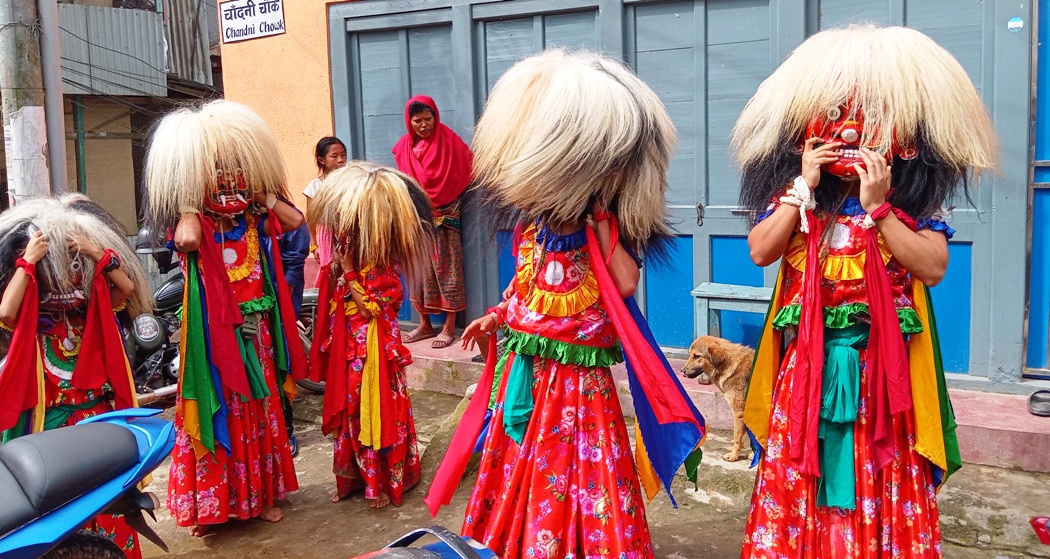To preserve, promote, and pass down local culture, the youth of Bhojpur have taken the initiative to revive the traditional Lakhe dance. This dance, historically associated with the Newar community, is now being celebrated with participation from all communities in the district, marking a significant shift towards inclusivity.
Nabin Budhathoki, a local youth leader, shared that the traditional Lakhe dance, which began on the day of Naag Panchami, has been officially inaugurated in Bhojpur. Traditionally, this dance was performed primarily in areas inhabited by the Newar community, but in recent years, there has been a collective push to include broader community participation to preserve this cultural heritage.
According to resident Bikal Shrestha, the Lakhe dance, which has been passed down through generations, began today and is a crucial part of maintaining and promoting the local culture. He emphasized that it is the responsibility of the youth to continue this tradition, ensuring its preservation and transmission to future generations.
Binam Shrestha, another cultural activist, noted that while the dance begins on different days in various regions, Bhojpur has traditionally started the Lakhe dance from Naag Panchami. He highlighted that local youths play a vital role in protecting and promoting the cultural traditions that have been in place for centuries. The dance was inaugurated with worship rituals at local temples, symbolizing the community’s deep-rooted connection to their heritage.
The Lakhe dance involves a variety of cultural performances, including drumming, traditional dances like Thakthuke and Ropai, and humorous and satirical acts, all of which are showcased during a procession through the marketplace. In addition to preserving these traditions, local youths are also receiving training in various aspects of the dance, including rhythm, song, and choreography, to ensure the dance is performed accurately and to its origins.
This cultural revival is taking place across Bhojpur Municipality, including areas such as Pani Tanki, Taksar, Dandagau, Bokhim, and Dawal, as well as in the wards of Eastern Arun Rural Municipality and Shadanand Municipality. The Lakhe dance, which began on Naag Panchami, continues until the day after Krishna Janmashtami, commemorating the day when Lord Krishna defeated Kansa.
To further this effort, the youth of Bhojpur has formed the ‘Bhojpur Lakhe Society,’ dedicated to transferring this important tradition to the younger generation, ensuring that it remains a vibrant part of the community’s cultural landscape.






